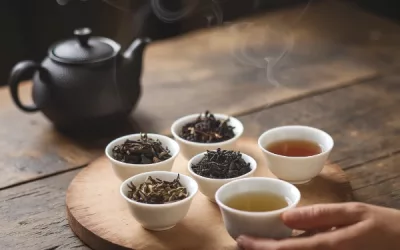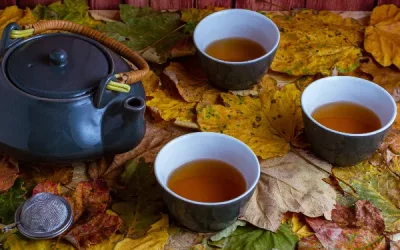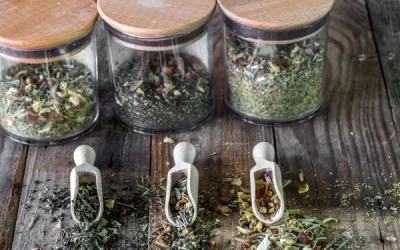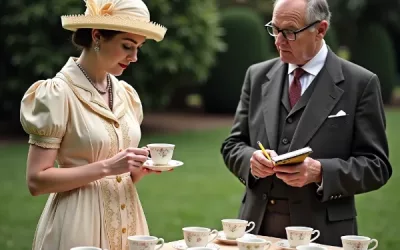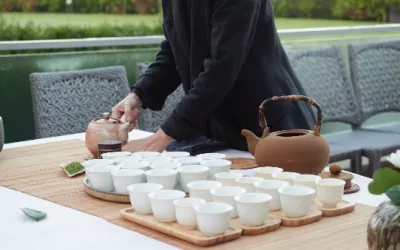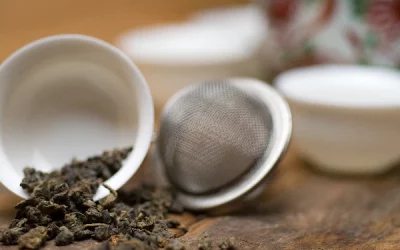Did you know that a perfect cup of tea isn’t just about boiling water and steeping leaves? It’s an art form anchored in tradition, precision, and personal taste. As tea enthusiasts, mastering the delicate balance of flavour and technique can elevate your brewing experience and deepen your appreciation for this age-old beverage. In this article, we’ll explore essential steps, common mistakes, and cultural nuances to help you brew the perfect cup of tea tailored to your preferences. Get ready to transform your tea game and discover the joy in every sip!
Table of Content
- What are the essential steps to brew a perfect cup of tea?
- How does the quality of tea and water affect the brewing process?
- Should milk be added before or after brewing the perfect cup of tea?
- What are the common mistakes to avoid when brewing tea?
- How can personal preferences shape the perfect cup of tea?
- What role does temperature play in brewing different types of tea?
- How can brewing methods differ between loose tea and tea bags?
- What cultural significance does tea hold in different societies?
- Conclusion
What are the essential steps to brew a perfect cup of tea?
Creating the perfect cup of tea is both an art and a science. It starts with choosing the right kind of tea and the best water, then moves on to precise measurements, and finishes with the correct steeping time. Each step is crucial and can dramatically change your tea experience. Once you’ve mastered these fundamentals, you’ll be well on your way to brewing tea that delights the senses.
First, let’s look at the different components. Quality ingredients are vital. Whether you prefer loose leaf or tea bags, ensure you select fresh, high-quality tea. The type of water you use is just as important; filtered or spring water usually works best.
The water temperature must be spot on, too—boiling for black tea, slightly cooler for green and white tea. Lastly, the steeping time and tea quantity can significantly influence the flavour, so don’t forget to adjust these based on personal preferences.
What type of water is best for brewing tea?
The water you use can make or break your tea experience. Opt for filtered or spring water to avoid any impurities that could affect the taste.
- Tap water often contains chlorine and other chemicals that can alter the tea’s flavour.
- Distilled water lacks minerals, which can make the tea taste flat.
- Filtered water removes impurities but retains essential minerals.
- Spring water is naturally balanced with minerals, offering a fuller flavour.
Stick to filtered or spring water to ensure your tea tastes as it should. These types of water provide a clean, balanced flavour that allows the tea to shine.
How does steeping time affect the flavour?
Steeping time is a game-changer when it comes to the flavour of your tea. Too short, and your tea will be weak and watery; too long, and it could become bitter or overly strong.
- Black tea: Steep for 3-5 minutes for a robust flavour.
- Green tea: A shorter steeping time of 2-3 minutes is ideal.
- White tea: Requires a delicate touch, around 4-5 minutes.
- Herbal teas: These can steep longer, usually 5-7 minutes.
Keep an eye on your steeping time to avoid any unpleasant surprises. Adjusting the steeping time to your liking can enhance your tea-drinking experience.
What are the best types of tea for beginners?
If you’re new to the world of tea, starting with something simple and easy to appreciate is a good idea. Here are some beginner-friendly options:
- English Breakfast: A classic black tea that’s robust and widely available.
- Earl Grey: Black tea with a hint of bergamot for a citrusy twist.
- Green Tea: Mild and slightly grassy, try it with a bit of honey.
- Chamomile: An herbal tea that’s calming and naturally sweet.
- Mint: Refreshing and caffeine-free, perfect for any time of day.
These types of tea offer a range of flavours and are generally well-received by newcomers. They provide a great introduction to the diverse world of tea.
In the 17th century, tea became a significant part of British culture, thanks in part to Catherine of Braganza, the Portuguese wife of King Charles II. She brought the tea-drinking habit from Portugal to England, and it soon became fashionable among the British aristocracy.
Catherine’s love for tea led to its widespread popularity, transforming it into a staple of British society. It’s fascinating to think that one person’s preference could influence an entire nation’s culture.
I remember the first time I tried making a perfect cup of tea. I used tap water, steeped it for too long, and ended up with a bitter mess. But after some trial and error, I learned about the importance of good water and precise steeping times.
Now, making tea has become a cherished ritual, and I love experimenting with different types of tea and brewing techniques. It’s amazing how small adjustments can create such a delightful experience.
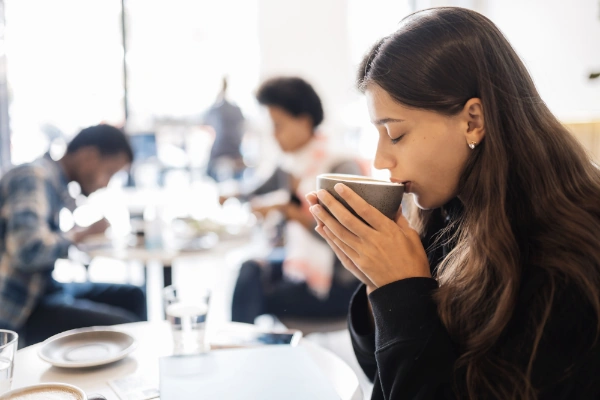
How does the quality of tea and water affect the brewing process?
The quality of tea and water significantly impacts the brewing process of the perfect cup of tea, influencing the flavour, aroma, and overall experience of your tea. High-quality tea leaves and clean, fresh water ensure that you extract the best possible flavours, making your cup of tea truly delightful.
The right combination of tea and water can make all the difference between a flat, bland brew and a vibrant, aromatic infusion.
Using premium tea leaves ensures that you get a robust and nuanced flavour profile, while the quality of water affects how these flavours are extracted. Hard water, for instance, can often mask delicate notes, whereas soft or filtered water can enhance them.
Furthermore, the temperature of the water and the steeping time also play crucial roles in achieving the perfect cup.
Types of tea, recommended water types, and their effects on taste
The table below outlines different types of tea, the recommended water types, temperatures, and steeping times to achieve the best flavour extraction. To use this table, identify your tea type, follow the recommended water type, maintain the suggested temperature, and steep for the advised duration.
This will help you get the best possible flavour from your tea.
| Tea Type | Water Type | Temperature | Steeping Time |
|---|---|---|---|
| Green Tea | Filtered | 75-80°C | 2-3 mins |
| Black Tea | Spring | 95-100°C | 3-5 mins |
| Oolong Tea | Soft | 85-90°C | 3-4 mins |
| White Tea | Distilled | 80-85°C | 4-5 mins |
| Herbal Tea | Mineral | 95-100°C | 5-7 mins |
| Pu-erh Tea | Filtered | 95-100°C | 4-6 mins |
| Matcha Tea | Distilled | 70-75°C | Whisked |
This table provides you with a comprehensive guide to the optimal brewing conditions for various teas. By adhering to these recommendations, you can elevate your tea-drinking experience.
Why high-quality tea matters
High-quality tea leaves are essential for the perfect brew. They provide a richer, more complex flavour and a more enjoyable drinking experience. Here are some reasons why investing in premium tea makes a difference:
- Enhanced flavour: High-quality tea leaves have a more pronounced and nuanced taste.
- Better aroma: Premium teas produce a more aromatic brew.
- Health benefits: High-grade teas often contain more antioxidants and beneficial compounds.
- Fresher taste: Quality tea leaves are less likely to be stale, ensuring a fresher cup.
- Less bitterness: Good quality tea is less likely to become overly bitter or astringent.
When you use high-quality tea, you’re not just brewing a beverage; you’re creating an experience. The difference in taste and aroma is noticeable, making each sip more enjoyable.
Importance of water quality
Water quality is just as critical as the quality of tea leaves. The right water can unlock the full potential of your tea, while poor-quality water can ruin it. Here’s why water quality matters:
- Purity: Clean, pure water ensures the true flavours of the tea are not masked.
- Balance: Water with the right mineral content can enhance the tea’s natural flavours.
- Consistency: Using the same type of water each time ensures a consistent brew.
- Temperature: Proper water temperature is crucial for extracting the right flavours.
- Softness: Soft or filtered water helps in extracting delicate notes from the tea.
To get the best flavour from your tea, always use fresh, clean water. Whether you’re using spring water or filtered water, ensure it’s free from impurities and has the right mineral balance.
I remember when I first started taking my tea-making seriously. I had always used tap water, unaware of how much it was affecting the taste of my favourite green tea. One day, a friend suggested using filtered water, and the difference was astonishing.
The flavours were clearer, and the tea had a smoother finish. Since then, I’ve always paid close attention to both the tea leaves and the water I use, ensuring each cup is as perfect as it can be.
Should milk be added before or after brewing the perfect cup of tea?
Tea enthusiasts have been wrestling with this question since time immemorial: Should you add milk before or after brewing the perfect cup of tea? Let’s dive into the brew of cultural practices, scientific viewpoints, and person-to-person preferences.
First up, let’s talk about tradition. In the olden days, particularly in Britain, adding milk first wasn’t just a matter of taste, but a protection measure for the delicate china cups—that’s right! Back when grandma’s grandma was sipping her Earl Grey, porcelain cups were about as resilient as a house of cards. Pouring hot tea first risked a crack in the prized crockery. Fast forward to modern times, and it’s more about the ritual than the relics.
Science joins the chat with some insights of its own. Some researchers argue that adding milk first allows the proteins to bind with tannins better, reducing the tea’s bitterness. Sounds fancy, right? But the jury’s still out on whether this makes a noticeable difference to us mere mortals.
Then, there’s the wildcard—personal preference. Some folks swear by milk-first for a smoother blend, while others see tea-first as the only path to enlightenment. Regional variations? Absolutely! The Brits, Indians, and even some Irish have their own spins on this classic conundrum.
It’s a debate that has brewed longer than your last cuppa, so what’s the deal?
What are the arguments for adding milk first?
Alright, so Shakespeare didn’t pen an ode to milk-first tea, but here’s why some people think it’s the bee’s knees:
- Temperature Control: Adding milk first can prevent the scalding of milk fats, creating a smoother blend.
- Heritage: As mentioned, the whole porcelain cup scenario has left its mark on tradition.
- Enhanced Mixing: Pouring hot tea into milk supposedly gives a more consistent mixture.
- Protein Binding: Better blending of milk proteins and tea tannins can lead to a less bitter result.
- Consistency: Some find this method just offers a more even flavour throughout the cup.
So, while it’s not exactly the Da Vinci Code, these points do make you think twice as you stare blankly into your tea cupboard.
How does milk addition affect the flavour?
Ah, the million-pound question. Taste is a delicate dance of chemistry and personal palate. Here’s the lowdown:
- Smoother Texture: Milk proteins bind to tannins, reducing bitterness and astringency.
- Rich Flavour: Milk can add a satisfying creaminess, making the tea robust yet mellow.
- Dilution Factor: Adding milk later might give you a stronger initial tea flavour but smooths out as you sip.
- Temperature Influence: Pouring cold milk can bring the overall temperature down, altering your experience.
- Oxidation: Adding milk after means your tea has already oxidised fully, affecting aroma and taste.
Ultimately, the milk-first faithful argue you’re getting a more rounded taste, whereas the tea-first tribe insists on preserving the tea’s inherent flavours. Take your pick—no one’s going to judge you, except maybe your grandma.
Are there specific teas that pair better with milk?
Not all teas are created equal, and certainly, not all are clamouring for a splash of milk. Here are the ones that play nice in the milky playground:
- Black Tea: Your classic Assams and Ceylons are practically calling out for that creamy addition.
- Chai: An Indian aromatic blend that’s almost sacrilegious without milk.
- Earl Grey: If you can handle a bit of bergamot with your creaminess, it’s a good option.
- Strong Breakfast Blends: English, Irish, or Scottish—these teas are designed to stand up to milk.
- Flavoured Teas: Vanilla, caramel, or any sweet undertones can harmonise well with milk.
Steer clear of adding milk to these bad boys unless you’re feeling particularly rebellious:
- Green Tea: It’s like trying to paint a masterpiece with a spade. Just don’t.
- White Tea: Too subtle and floral to benefit from the richness of milk.
- Herbal Teas: Most fruit or floral infusions don’t mix well with the heaviness of milk.
Trust me; when you’ve tried the wrong pairing, you’ll know it. It’s like wearing socks with sandals—always regrettable.
As you ponder over your next tea-making ritual, let’s journey back to the Great Tea Debate of London, 1660. Charles II, newly restored to the throne, needed to stabilise the economy—cue the introduction of tea plants from China.
Tea became the talk of the town, and before long, debates on milk ethics emerged at court. Samuel Pepys, the noted diarist, documented many a soirée where the milk-first versus tea-first question divided the elite.
They didn’t have Netflix, so tea discussions were their drama. Imagine Charles hollering, “Milk first!” as courtiers argue their stance, perhaps with more passion than he ruled the kingdom.
Whether you’re channelling your inner monarch or just grabbing a quick cuppa, the perfect cup of tea remains a timeless, ceremonious act of love—or perhaps an argument waiting to happen. Happy brewing!
What are the common mistakes to avoid when brewing tea?
Making the perfect cup of tea is an art. But even the most seasoned tea enthusiasts can slip up from time to time. Let’s dive into some common pitfalls that are dragging down your tea game, one cup at a time.
Picture this: you’re ready to enjoy a delightful cup of tea, but something’s just off. It’s bitter, lacks flavour, or just tastes plain awful. You might be making one of these rookie mistakes:
- Reboiling Water: Got some cold water in the kettle? If you’re tempted to boil it again, stop right there. Reboiling changes the composition of water, making it taste flat or metallic. Not ideal.
- Incorrect Steeping Times: Time is not just money; it’s also the difference between perfect and undrinkable tea. Too long, and it’s bitter. Too short, and it’s weak. Find that sweet spot.
- Neglecting to Warm the Teapot: An icy teapot can shock your tea leaves, leaving you with a less-than-stellar brew. Taking an extra minute to warm the pot can make a huge difference.
- Using Poor Quality Tea: Garbage in, garbage out, as they say. No amount of precision can save you from bad tea leaves. Go for quality to elevate your experience.
- Ignoring Personal Taste Preferences: Just because Karen from work likes her tea a certain way doesn’t mean you will. Make it the way you like, because it’s your cup of joy!
So, next time you’re craving that flawless cup, remember these essential checkpoints.
How can reboiled water affect the taste?
Reboiling water might sound harmless, but here’s why it’s a boozle-headed bad move.
Repeatedly boiling water affects its chemical makeup, mainly by driving off the oxygen. This causes the water to taste stale. And believe it or not, the minerals in the water can start to concentrate, giving your tea an odd, off-putting flavour.
- Flat Taste: Less oxygen equals less life in your cup.
- Metallic Flavour: Elevated mineral concentration? Yuck.
- Reduced Freshness: Water that’s been boiled and reboiled can lose its fresh aspect.
- Temperature Variability: Reboiled water may not hit that perfect brewing temp.
Keep it simple: use fresh water each time you boil. Your taste buds will thank you.
What is the impact of steeping tea for too long?
We get it, you got lost in a Netflix binge, but oversteeping tea is practically a sin in the tea world.
Letting those precious leaves sit too long in hot water releases tannins, which aren’t your friends. Tannins lend tea its astringency and can turn your brew bitter, making it less enjoyable to the palate.
- Bitterness: Oversteeping leads to an unpleasantly bitter taste.
- Astringency: Too many tannins can make the mouth feel dry and puckered.
- Muted Flavours: Instead of a symphony of flavours, you’ll get a one-note disaster.
- Wasted Tea: Essentially, you’ve taken quality tea and ruined it.
Set a timer! Enjoy that perfect balance of aroma and taste with a little bit of attention.
Why is warming the teapot important?
Cold teapots are party crashers for otherwise stellar tea. You wouldn’t drop ice cubes into soup, would you?
Warming the teapot ensures that your boiling water stays at the optimal temperature. It also prevents a sudden drop in temperature which can shock the tea leaves, leading to a flat taste. Think of it like preheating your oven—crucial for achieving consistent results.
- Temperature Maintenance: Keeps water at the right brewing temp.
- Enhanced Flavour: Avoids temperature dips that affect taste.
- Better Infusion: Helps tea leaves open up and release their full flavour.
- Consistency: Ensures every cup is as good as the last.
Just swish some hot water around in the pot before brewing. It’s a small step for you, but a giant leap for tea-kind.
Back in the 18th century, tea was so prized in England that they stored it in locked tea caddies. Imagine the horror of wasting such a valuable commodity through simple mistakes!
Sarah Churchill, Duchess of Marlborough, once famously chastised a servant for reboiling water, ruining her coveted Darjeeling. Such incidents were taken seriously. If it was good enough for a duchess, it’s good enough for us.
Perfect your tea ritual by avoiding these common blunders, and you’ll be on your way to enjoying the perfect cup every time. Cheers!
How can personal preferences shape the perfect cup of tea?
Making the perfect cup of tea is essentially part science, part art, and a whole lot about knowing what makes your taste buds sing. Whether you’re into a robust, dark brew that’ll put hairs on your chest or a light, floral cup that whispers sweet nothings, personal preference rules the roost. Let’s dive into how individual tastes play a part in crafting this ancient beverage, shall we?
How can I customise my tea to suit my taste?
When it comes to tea, the world is your slightly overpriced oyster. Here’s how to make that cup just right for you:
- Sweetness: Some folks like their tea as sweet as a love song, while others prefer it strong and bitter like their humour. You could use:
- Sugar
- Honey
- Agave syrup
- Stevia
- Strength: The strength of your tea can make or break your experience:
- For a strong cup: Let it steep longer, use more leaves, or go for black tea.
- For a mild cup: Use fewer leaves and reduce steeping time, or choose green or white tea.
- Types of Tea: There’s a tea for everyone, from the adventurous concoctions of oolong to the familiar embrace of black tea.
- Black
- Green
- White
- Oolong
- Herbal
- Additions: Add a little personality to your tea. Try:
- Lemon slices
- Mint leaves
- Spices like cinnamon or cardamom
- Milk or cream
Every tweak turns your tea into a bespoke concoction tailored just for you. So, mix, match, and find that sweet (or strong) spot.
What are popular tea additives and their effects?
Tea enthusiasts love tinkering with their cuppa as much as a mechanic loves tweaking an engine. Here are some popular tea additives and what they bring to the party:
- Lemon: Adds a zesty kick and a healthy dose of Vitamin C. Bonus: it can prevent tea from being too bitter.
- Milk: Turns your strong, dark brew into something smooth and creamy. Perfect for black teas.
- Honey: Sweetens the pot with a floral undertone and antioxidants. It’s like nature’s elixir in your teacup.
- Mint: Adds a refreshing, cooling sensation. Great for digestive health.
- Cinnamon: Infuses your tea with warmth and a spicy edge. Ideal for cold days and cozy afternoons.
Experiment with these additions, and you’ll find the right mix that’ll keep you coming back for more.
How do cultural backgrounds influence tea preferences?
Tea isn’t just a drink; it’s a global phenomenon with more varieties than you can shake a teapot at. Cultural influences shape tea-drinking habits around the world:
- British: You can’t talk tea without mentioning the Brits. Expect black tea, often served with milk and sugar. And let’s not forget the ritual of afternoon tea.
- Indian: Think Chai—strong black tea brewed with a blend of spices like cardamom, ginger, and cinnamon, served with milk and sugar.
- Chinese: It’s a green tea haven. Expect lighter brews often prepared meticulously without additives to appreciate the purity of the leaves.
- Japanese: Green tea here is another level. Matcha, the finely ground powder, turns tea-making into a precise and almost meditative ceremony.
- Middle Eastern: Think mint tea, served heavily sweetened. Mint tea is a symbol of hospitality and is often shared among friends and family.
Get a taste for these cultural influences, and you’ll discover there’s a whole world of tea out there, each cup telling a different story.
During World War II, tea was more than just a beverage; it was a morale booster for British soldiers. Troops were issued tea rations and would make ‘brew-ups’ possible whenever they had a moment to rest.
In fact, the British government deemed tea essential to the war effort, even going so far as to ration it strictly to ensure everyone could get their fair share. This historical nugget underscores how this humble drink has been a source of comfort and resilience in challenging times.
So the next time you enjoy your perfect cup of tea, remember that it’s part of a rich, global tradition full of history and cultural significance.
What role does temperature play in brewing different types of tea?
You know that satisfying feeling when you nail a recipe and get exactly the taste you expected? Well, brewing the perfect cup of tea hinges on getting the temperature just right. Different teas demand different levels of heat, and I promise, following these temperature guidelines will feel like levelling up your kitchen game.
Temperature is not something you can wing when it comes to tea. Treat it right, and you unlock flavours that’ll make you think your taste buds just discovered a new planet. Mess it up, and your tea might as well be boiled socks.
Here, we’ll unravel the secrets of brewing teas at their ideal temperatures, how temperature influences taste, why cooling is a must, and even some gear talk.
What is the ideal temperature for green tea?
Green tea isn’t as forgiving as your ex. You have to treat it gently.
- Ideal temperature: 70–80°C. Use a thermometer if you have one; if not, let boiling water sit for about 5 minutes.
- Brewing it at lower temperatures prevents bitterness. At higher temperatures, you’re basically committing a flavour crime.
- Why? Because the delicate amino acids and catechins in green tea are more sensitive. Boil it up, and you’re greeting them with a sledgehammer.
When it’s treated right, green tea’s got this mild, sweet, yet grassy flavour that’s downright refreshing. Keep it cool, and it rewards you.
How does boiling water affect black tea?
Ah, black tea—the heavyweight champ.
- Ideal temperature: 95–100°C, so fresh off the boil is fair game.
- Why? Black tea’s tough; it’s fully oxidised and can handle the heat. Use boiling water to extract its rich, robust taste without a hitch.
- Anything less, and you’re sipping on diluted sadness.
Boiling water unlocks the bold tannins and deep flavours hidden in those dark leaves. Think malty, think brisk, think date-night-in flavourful.
Why is cooling time important before drinking?
Okay, you didn’t just brew a great cup to burn your tongue.
- Safety first! Hotter-than-Hades tea can cause burns.
- Flavours meld better. Cooling lets the complex notes linger instead of overloading your senses.
- Ideal cool time: Let it sit for 2–3 minutes. Worth the wait, trust me.
- Bitterness reduction: Cooling handles those rogue tannins that think they’re the boss.
Take that cooling time, breathe in the aroma, and relax. Your taste buds will thank you instead of throwing a tantrum.
Tea and temperature go hand in hand— mess up one, and you mess up the other. Invest in a good thermometer or an electric kettle with temperature settings, and your freakishly good tea will make you the talk of the town.
Back in the early 19th century, tea was a big deal in England. But did you know that the temperature at which tea is served got a little bit controversial? There’s a story of the Duchess of Bedford, who is often credited with popularising afternoon tea.
She was kind of a trendsetter, introducing little snacks and the idea of tea at a very precise temperature to keep it sublime. Apparently, she had a bit of a perfectionist streak, insisting on the perfect cup of tea with exact temperatures to make sure flavour and comfort were at their peak.
This was no simple task without our modern gadgets. So, the next time someone tells you you’re being too fussy about your tea, just tell them you’re following in noble footsteps!
How can brewing methods differ between loose tea and tea bags?
When it comes to making the perfect cup of tea, the brewing method can make or break your experience. Let’s dive into what makes loose tea and tea bags so different, from the flavour you’ll get out of each, the time you’ll need, the amount you should use, and the gear you’ll need. Ready? Put the kettle on, and let’s get started.
Loose tea and tea bags may seem like they’re all about packaging, but there’s much more to it. The primary differences boil down to flavour extraction, steeping time, quantity, and tools. Loose tea typically offers better flavour because the tea leaves are less broken, allowing for more complex flavours and aromas.
Think of it like freshly ground coffee compared to the instant stuff. Loose tea also gives you more control over the steeping time and quantity, making it easier to customise your perfect cup. On the flip side, tea bags are incredibly convenient, cutting down on prep time and cleanup – just plop it in and go on with your life.
What are the advantages of using loose tea?
Loose tea isn’t just for tea snobs. It’s got some legit benefits that make it worth the extra effort.
- Better Flavour: Loose tea leaves are larger and less processed, meaning they preserve more of their oils and flavours. You get a richer, more nuanced taste – think orchestra, not one-man band.
- Customisation: You can easily adjust the amount of tea you use or mix and match different teas to create your custom blend. Your tea, your rules.
- Aromatherapy: The aroma from loose tea leaves can be quite a sensory experience. It’s like a spa day for your nose.
- Sustainability: Loose tea usually has less packaging than tea bags, which often come with strings, tags, and individual wrappers. Go green while you sip!
- Health Benefits: Loose tea often contains higher-quality leaves with better retention of antioxidants and other health benefits. Sip your way to wellness.
While it might take a bit more effort, the rewards—with flavour, health, and sustainability—are worth it. Plus, the ritual of brewing loose tea can be quite relaxing.
How does the brewing process differ for tea bags?
Tea bags, the workhorse of the tea world, have their own set of brewing rules and come with specific traits.
- Convenience: Tea bags are the epitome of ease. Just toss a bag in your cup, pour hot water, steep, and you’re done. How simple can it get?
- Steeping Time: Tea bags usually have finely crushed tea leaves, which steep faster but can also become bitter if left in too long. A quick dunk is all you need.
- Quantity Control: Pre-measured for you, giving you a consistent flavour every time. No need to second-guess your measurements.
- Cleanup: Toss the bag. No fuss, no mess. Perfect for busy mornings or quick breaks at work.
- Portability: Tea bags are easy to carry around, making them perfect for travel or the office. Pop one in your pocket and you’re all set.
While tea bags may not offer the same flavour complexity as loose tea, they win in the convenience department, hands down.
Are there specific tools needed for loose tea?
Yes, there are some gadgets and gizmos you’ll want to get your hands on if you’re serious about brewing loose tea. It’s all about having the right tools for the job.
- Tea Infuser: A must-have. It holds your loose tea leaves while they steep. Comes in all shapes and sizes, from balls to baskets.
- Teapot: For those who like to brew multiple cups at once. Also doubles as a nice table centerpiece.
- Tea Tongs: For handling and removing tea infusers without burning your fingers.
- Tea Scoop: Helps measure the right amount of tea each time. Accurate and stylish.
- Kettle: Sure, you can microwave water, but a proper kettle allows better control over your water temperature.
These tools might seem intimidating or a hassle at first, but they can turn your tea-drinking into a ritual, even a mini-event to look forward to.
Back in the 1920s, a London tea shop owner named Mr Thomas Sullivan accidentally invented tea bags. He sent sample bags of tea to his customers. Instead of using the loose tea, his busy patrons plopped the bags directly into hot water. Voilà! The tea bag was born.
Sullivan’s mistake turned into a global phenomenon, changing how many of us drink tea today. So, next time you’re too lazy to brew loose tea, thank Mr Sullivan for the handy little bags!
What cultural significance does tea hold in different societies?
Tea isn’t just a drink; it’s a symbol of culture, tradition, and social interaction across the globe. From grand ceremonies in Japan to sweet chai in India’s bustling streets, tea’s cultural footprint is immense. To truly appreciate tea, one must understand its deep cultural roots, ranging from historic tea routes to modern-day tea parlours.
Tea ceremonies are a big deal, especially when it comes to respecting traditions. The Japanese tea ceremony, or “chanoyu,” is a meticulous ritual that involves the preparation and presentation of powdered green tea (matcha).
Every step, from the placement of tea utensils to the way the tea is poured, is designed to create a moment of peace and mindfulness. It’s not just about sipping tea; it’s about appreciating the process.
Meanwhile, in China, they have “gong fu cha,” which translates to “making tea with skill.” Here, the focus is on brewing oolong tea using tiny teapots. The ceremony is about precision, patience, and appreciation of flavours.
In the UK, a simple cup of tea can solve just about everything. Known as “afternoon tea,” it includes a pot of tea accompanied by finger sandwiches, scones with clotted cream, and pastries. It’s a social event, aimed at bringing people together.
As for the historical context, tea has travelled far. From its origins in China, it journeyed via the Silk Road, influencing various regions. In the 17th century, it made its grand entrance in Europe, where it quickly became the drink of choice for the aristocracy.
So, in essence, tea is more than a beverage; it represents history, culture, and the art of socialising.
How do tea customs vary across cultures?
Now, let’s spill some tea on exactly how customs vary from place to place. Each country has its own unique way of incorporating tea into its daily life, creating a tapestry of cultural diversity.
- Japan: Ritualistic, serene, and almost spiritual.
- China: Detailed, traditional, and skill-focused.
- India: Strong, spiced, and hearty, usually with milk.
- Russia: Often served with jam, goes with everything from heavy meat dishes to desserts.
- Morocco: Used as a welcoming gesture, usually poured from a height to create froth.
- UK: Milk and sugar, biscuits or cake on the side. Sometimes a splash of social gossip.
The variations are endless. Understanding these customs gives you a flavour of the values and traditions that shape each society.
Tea is practically the ultimate social lubricant. Whether you’re discussing politics or dishing out the latest gossip, tea has got you covered. It’s that magical potion that brings everyone together and gets the conversation flowing.
- Bridging gaps: Tea can bring people from different backgrounds together. A shared pot can break the ice like nothing else.
- Ceremonial importance: In places like Japan and China, tea ceremonies are almost sacred and serve to show respect.
- Celebrations: Be it weddings or festivals, tea is often at the centre of the occasion.
- Solving problems: Got a problem? Talk it out over a cup of tea. It’s practically therapy in liquid form.
- Family time: In many cultures, tea time is family time. It’s when everyone gathers to connect and unwind.
The social dynamics created by a simple cup of tea are profound, making it much more than a mere drink.
How has the perception of tea changed over time?
Tea’s journey has been one for the history books. What started as a medicinal drink in ancient China evolved into a symbol of British colonialism, and today, it’s an artisanal, globally beloved beverage.
- Early days: In ancient China, it was used for medicinal purposes to cure everything from headaches to indigestion.
- Colonial era: The British East India Company made tea a global commodity, making it accessible to the masses.
- Modern times: Now, it’s all about the experience. Fancy tea shops, artisanal blends, and tea tourism are all the rage.
The evolution of tea reflects broader changes in global trade, culture, and lifestyle preferences.
Speaking of history, let’s not forget the Boston Tea Party of 1773. The American colonists, fed up with British taxation, dumped 342 chests of British tea into the harbour. It was a significant event leading to the American Revolution, showing just how impactful tea can be in shaping history.
There you have it – the rich, multifaceted world of tea, stretched across continents and centuries. Now, go make yourself a cup and savour the legacy it carries.
Conclusion
As I reflect on the journey through the art of brewing the perfect cup of tea, it becomes clear that this cherished ritual is steeped in both simplicity and complexity. The essential steps we explored—from selecting quality ingredients to understanding the impact of water temperature and steeping time—illustrate how even the smallest details can significantly enhance or detract from the tea experience.
I’ve found that the quality of both tea and water cannot be overstated; they form the backbone of an exquisite brew. By utilising the provided table, I hope it serves as a helpful guide for navigating these choices, showing how different varieties lend themselves to specific water types and brewing conditions.
Moreover, our discussion about the age-old debate of milk addition reveals just how personal and culturally rich our tea rituals can be. Whether you prefer to add milk before or after brewing, remembering the science and tradition behind these choices adds another layer of meaning to what seems like a simple act.
Avoiding common mistakes, particularly those involving water quality and steeping times, can profoundly improve your brew, allowing the unique flavours of each type of tea to shine through.
Ultimately, what stands out is the personal nature of our tea-making journeys. Each cup can be a reflection of our tastes, shaped by cultural backgrounds and individual preferences. This interplay of sweetness, strength, and additional flavours allows us to customise our tea experience, elevating it from mere hydration to a comforting ritual.
As we look ahead, why not experiment with your brewing methods? Take the insights gathered here and apply them in your kitchen, perhaps embracing the loose tea experience or diving deeper into the rich cultural significance of tea in your community. After all, the quest for the perfect cup of tea is never truly finished; there are always new flavours to explore and traditions to honour.
“Tea is the magic elixir that brings people together.” As I sit with a freshly brewed cup in hand, I invite you to ponder: what magic does your perfect cup of tea hold for you?
Resources
- Addition of milk to tea infusions: helpful or harmful? Evidence from in vitro and in vivo studies on antioxidant properties – A review
- The types of brewing water affect tea infusion flavor by changing the chemical composition of tea
- Efficient extraction strategies of tea (Camellia sinensis) biomolecules: A review


